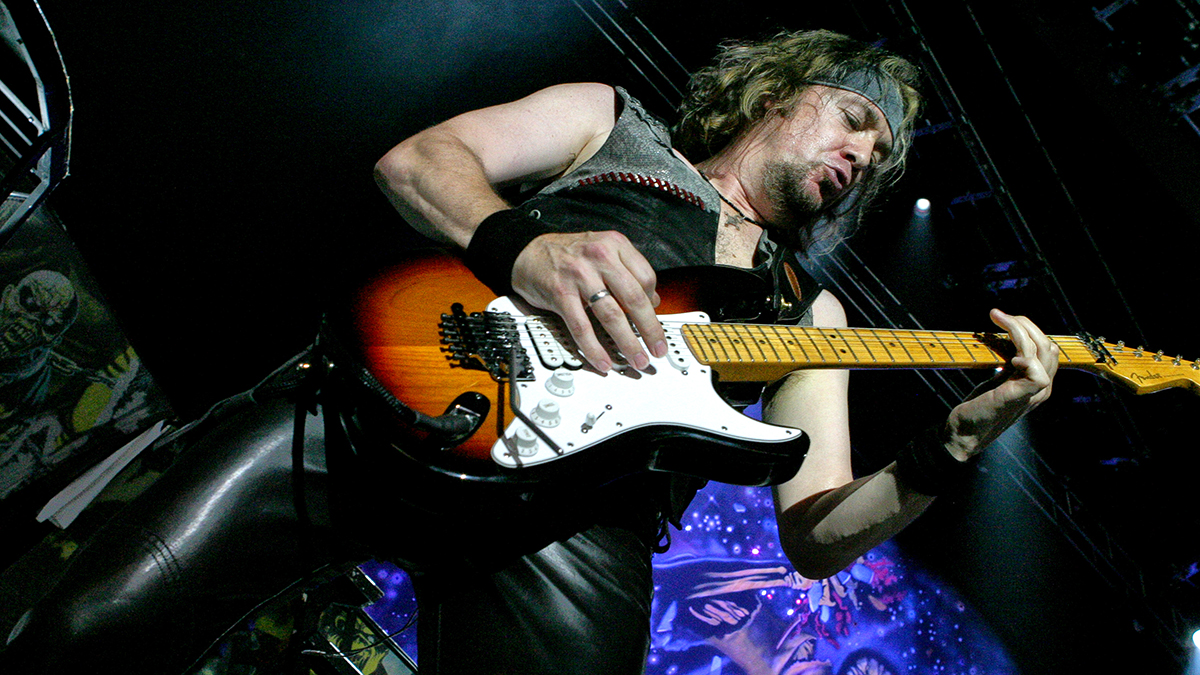“I can’t build a guitar, I can’t wire an amp. Woodworking? That’s not my role here. My role is to push guitar culture forward”: Gibson’s Mark Agnesi is on a mission to create more guitar players
The vintage obsessive sits at the pivot point between fan and brand. We discuss Gibson’s hits, misses and the daily joy of curating its Certified Vintage program
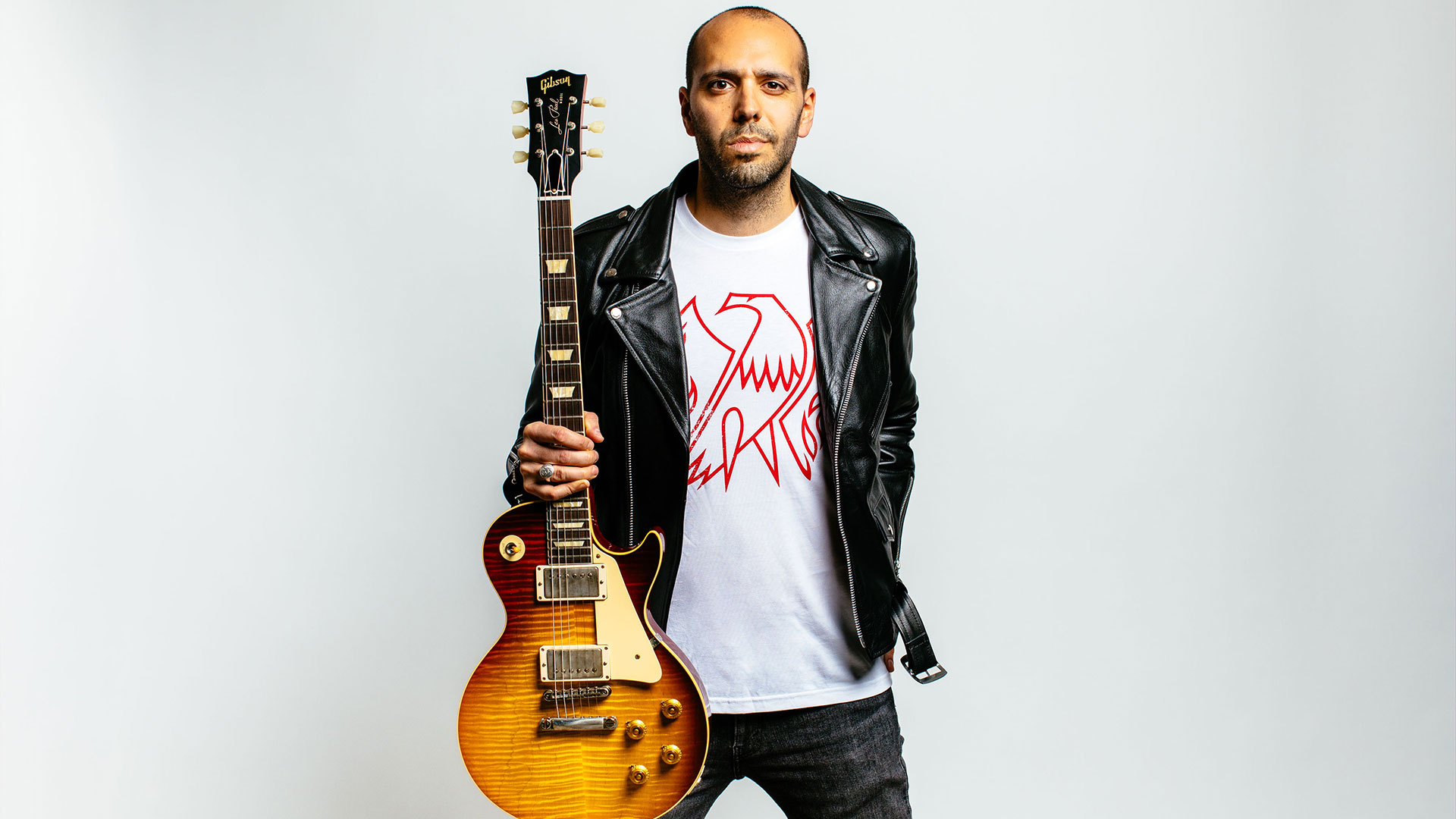
In 2018, roughly a decade into his role managing LA’s vintage mecca Norm’s Rare Guitars, Mark Agnesi made a video documenting his personal guitar collection.
Shot in his spare room on a shaky camera by his wife, Jackie, it featured a line-up laced with Gibson Custom Shop builds and stories to match. His personal favorite – “the guitar against which all others are judged” – was a 2007 Gibson Custom Shop ’57 Les Paul VOS, gifted to him by Jackie.
Six months later and Agnesi was announced Director of Brand Experience at Gibson, having been plucked from retail at the behest of one of his repeat clients at Norm’s – Cesar Gueikian.
Alongside his monster back catalog of Norm’s Guitar of the Day videos, that 2018 clip was in some ways, a proof of concept for the work he would eventually go on to do (at considerably higher production value) with the likes of Slash and Mike Campbell on Gibson TV’s wildly popular The Collection videos.
Agnesi’s life has changed considerably since he made that clip, as has his guitar collection, which currently encompasses eleven Murphy Lab builds – “but the Goldtop will never leave the collection.”
As Director of Brand Experience – a role created specifically for him – Agnesi has a multi-faceted dream job loosely bound under the umbrella of “guitar culture”.
Essentially, he exists at the (sometimes tricky) pivot point between the company and its fanbase: fronting Gibson’s burgeoning multimedia empire, overseeing the Gibson Garage spaces and, most recently, curating its own direct-to-consumer rare and vintage guitar drops, in the form of Gibson’s Certified Vintage program.
All the latest guitar news, interviews, lessons, reviews, deals and more, direct to your inbox!
The latter feels like a particular passion project for him. Like VP of Product Mat Koehler, he is a vintage nut ‘on the inside’ and, as such, has delighted in going through the firm’s dustiest closets in search of obscurities, prize pieces and NOS models to include in the latest Certified Vintage drops.
The offerings run the full gamut from weird (the 1981 Futura Prototype) to wonderful (Kirk Hammet’s stunning 1960 ’Burst Sunny), with prices to match. Each is authenticated and comes with a new lifetime warranty from the firm, alongside other perks.
Perhaps more importantly, given the majority of players can’t afford to play the vintage market, the program is also a way of sharing the stories behind some of the highlights, oddities and plain unknowns of the firm’s storied past.
We’re here to discuss all of that, but also to get Agnesi’s opinion – as the Gibson fan brought in-house – on the company’s position and reputation within the guitar landscape of 2023.
“Whatever you want to talk about,” says Agnesi. Well, alright then…
How did the Gibson Certified Vintage program come about?
We just started opening closets and finding these new old stock guitars. Things that still have the plastic on the pickguard from the late ’70s and early-’80s
“Well, we get calls every day about people wanting us to put our name on their guitar. Like, ‘Is this real? You guys know.’ So it was like, ‘Well, there's something here, you know?’ We are the experts on our guitars. We have the documentation. We know what the manufacturing processes were [and how] to verify this stuff.
“Mat Koehler, who's our Vice President of Product, is a massive vintage guy, too. So there's enough of us here that are absolute nuts for this stuff.
“Then we started looking at, ‘Well, how can we do this different than the typical vintage guitar store?’ Well, we're Gibson. So we can certify it, we can put new warranties with it, which is a first in the industry. You can buy a 60-year-old guitar that has a new lifetime warranty with it that's backed by the manufacturer. There's nobody else in the industry that could offer that.
“So we thought we should give it a shot. And so far, it's been sold-out, and I've got cases and cases of the new things that I've been acquiring.
“We had so much stuff here. We just started opening closets and finding these new old stock (NOS) guitars. Things that still have the plastic on the pickguard from the late-’70s and early-’80s. Nobody has this stuff. You can't find this stuff, so it’s like, ‘Let's let people enjoy this.’”
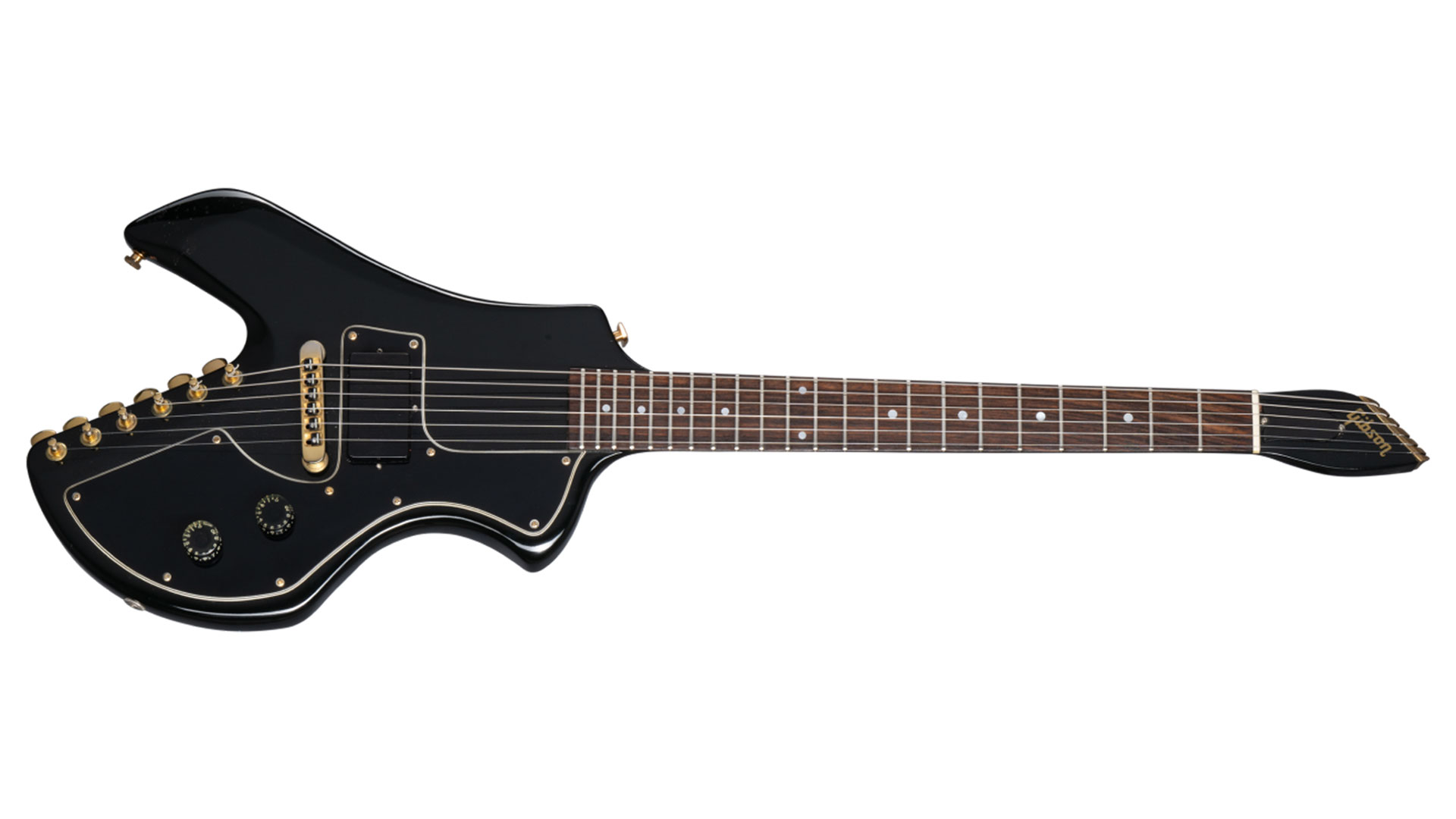
You do a lot of guitar ‘treasure hunting’ for Gibson. How do you decide what goes into the Certified Vintage store?
“We do it in drops of five guitars at a time. And I like to try and curate each one of those drops. So that there's something for everyone in there, I always like to have one blue chip collector, massive ‘Golden Era’ thing go in there. And then I always like to have the – forgive me – ‘entry level’ $10,000 thing in there.
[Laughs] Yes, “the $10,000 entry-level guitar”…
When I opened the case, and saw the Futura prototype I was like, ‘I've read the articles about this guitar... And here it is!’
“Which might freak people out! But when we're talking about buying vintage collectibles, 10 grand is entry-level. And then I like to have some things that fit in other price bands and I like to always have one NOS cool thing or a prototype in there. So each of the drops will always have something that is attainable.”
What’s been the best discovery of the Certified Vintage program so far?
“I mean, on the last drop, I had the Futura prototype, which was a cool guitar that people talked about. And I'd seen articles written about it and stuff. The only headless guitar that we ever made.”
Yes, albeit with a headstock.
“Well, a tiny headstock! When I opened the case, and saw that I was like, ‘I've read the articles about this guitar. I've heard the stories about how it got rejected by the marketing department and everything got changed...’ And it's like, ‘Here it is!’
“It was like, ‘We've got to share this with the world.’ It's not doing me or the company any good having it tucked away in a closet for another 40 years, you know? Let's share the story and put it out there. I think that's one of the really cool ones.
“Then the one that we have for sale right now, Sunny, which is Kirk Hammett’s 1960 ’Burst, that's just an incredible guitar, an incredible piece of history and, as a guitar collector, it's really got everything that someone who is going to be dropping a lot of money to buy a ’Burst could possibly want, you know?
“Massive top, it's got great color, it's in [classic coffee table guitar book] Beauty of the ’Burst and it's got a major rockstar celebrity owner. I mean, it's got like everything that you could want in a ’Burst, all wrapped up into one guitar.”
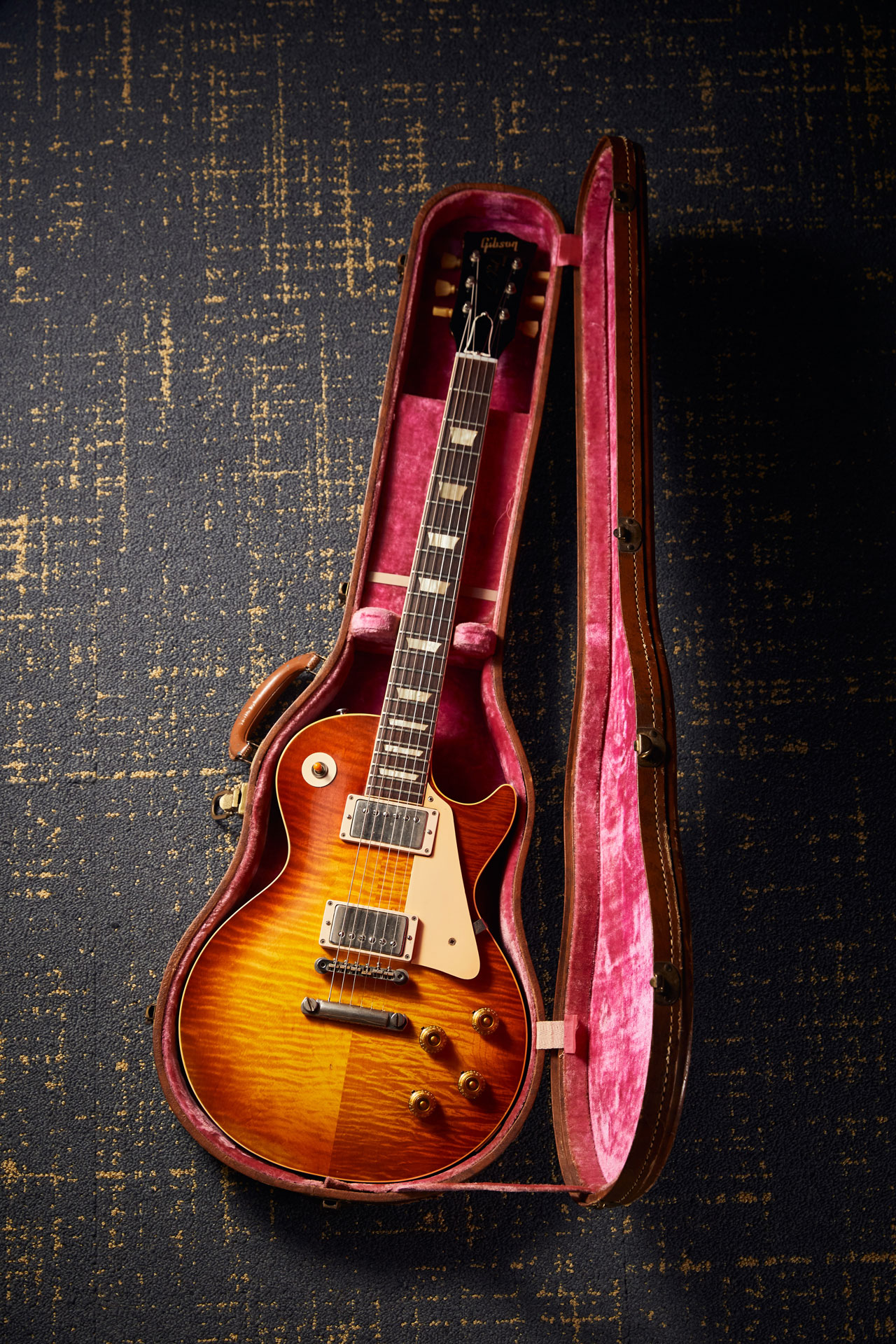
The Futura drop was fascinating as it filled in that gap between what was intended and what eventually did hit the market. You could suddenly see how Gibson got from A to B.
“Yes! What the intention originally was. There was this weird hook at the bottom and when you stick six tuners in there you go, ‘Oh, that's what they had in mind!’ Then you [see how they] started to lose the intention of the designers, once you stick a headstock in. Now it just looks like a can opener, like everyone always kind of referred to those as, but when you see its original concept and design you go, ‘Oh, I get it.’”
The vintage and high-end guitar market has seen prices rise a lot in recent years – way beyond inflation. Do you think there has also been a change in the typical buyer over that time?
Everyone I know that his bought a ’Burst in the last five years is playing that guitar every single day
“I think there's definitely more people coming in. But I have to be honest, that real top-tier stuff, the real big-dollar stuff, I don't know anybody who's buying that stuff that has no intention of playing it. Everyone I know that his bought a ’Burst in the last five years is playing that guitar every single day. I think there's this concept that rich guys are buying these and then tucking them away…”
Imprisoning them!
“That is not at all what I'm seeing, because everyone that I know who owns one, it is the first thing that they pick up in the morning when they wake up, it's the last thing they touch before they go to bed. People are playing these guitars – especially the expensive, big-dollar ones.
“So while I think more people have been getting into the market, the people that are spending big money on this stuff are not buying wall hangers. They're buying these to play and they're playing them.”
Well, I have certainly been guilty of thinking that in the past.
“People might have that perception, but I'm here to debunk that perception, because I'm closely involved with a lot of people that own these things. That ain't the case! These people are buying them to enjoy them and play them.”

There’s an increasing trend as well – among the people that are, at least, open about owning valuable or vintage guitars – in lending them out and getting them in the hands of artists for use onstage, or in the studio, like Jared James Nichols playing the Kossoff Burst.
“Exactly. They are not that precious that they can't be played. A lot of these are already 60 years old; they're gonna be okay, you know? People can play them, people can bring them on stage, you can refret them, if they need frets.
If you're sitting here with it and you're so worried about the value [dropping] you can't play the damn thing, it's worthless. Put frets on it!
“When I started in the vintage guitar industry, there was still the [complete] originality thing, and I think we’re starting to turn the corner on that now, which I'm really happy about. People don't seem as afraid to refret things, because [they think] it’s going to affect the value.
“We’ve said this, like: ‘If the thing doesn't play, it's worthless.’ So if you're sitting here with it and you're so worried about the value [dropping] you can't play the damn thing, it's worthless. Put frets on it! There are far worse things you can do to guitars than put a new set of frets on it and have it PLEK-ed, so it plays like a new guitar again.
“To me that's like putting a new set of tires on a vintage car that's been driving around on bald tires. There are certain basic maintenance things that I think the industry has turned the corner on, which is a good thing. Putting new frets on a guitar is perfectly OK.”
Back on the Certified Vintage side, what does the future of the program look like?
“I've got the next three drops planned here. There's some really cool things [in there] that you may not see often, or some things that you may not have seen at all.
“It's also the 150th anniversary of Epiphone this year, so I have an entire Epiphone drop of some of the coolest vintage Epiphone guitars that we've had – and a couple of things that I've picked up – that really span that golden era of Epiphone in the early- to late-1960s.
“Then some other great Gibson stuff. I mean, Dot-neck ES-335s – I've got a couple of from late ’59 and a ’61, depending on the neck you want. Then I'm starting to throw some acoustics in, which we haven't done yet. So a little more variety, but all good stuff.”

And one question on Sunny, in particular. There's no price listed. What is the ballpark value for that guitar?
“A half-a-million dollars is the ask on that guitar, but anyone who wants to make a serious offer is welcome to make serious offers. Just like with any of the Certified Vintage guitars, just like if you walk into any vintage guitar store – offers are acceptable, you know?”
On the price front, it seems that expensive guitars are still shifting, despite the cost-of-living crisis. Have you noticed that trend? And has there been any drop in demand for the lower-priced guitars at Gibson?
We were always trying to catch up with demand, which ultimately ended up being a good thing, because we didn't get stuck holding $100 million worth of cancellable orders
“I don't know if I've noticed much of a trend of anything dropping off. Everything has stayed fairly consistent. Epiphone is absolutely on fire as well, so it seems pretty healthy, across the board.
“For me – and I mean, in terms of the really huge-dollar, vintage stuff – you have to realize the people who play in that market are really not hit by the price of milk and eggs. I'm sure Ferrari is not having any trouble with new releases sitting on the lot for a while, and Rolex doesn't have any problems – you still can't get one of those. It's a different market, with different players. But even just in the general new guitar market, everything has still been pretty strong.”
Fender’s CFO recently revealed it had $100 million of canceled retail orders in 2022, and had to slow production and supply lines as a result. But at Gibson that’s not been the case at all?
“Look, since we took over ownership in 2018 and relaunched in 2019, we haven't been able to make enough guitars. It was always on backorder, and we'd need more, so we were never able to hit the numbers where we could start having warehouses and warehouses full of inventory.
“We were always trying to catch up with demand, which ultimately ended up being a good thing, I think, for us because that meant that we didn't get stuck holding, you know, $100 million worth of cancellable orders. So I just think it was different because, through that whole thing, we were always trying to catch up to orders.”
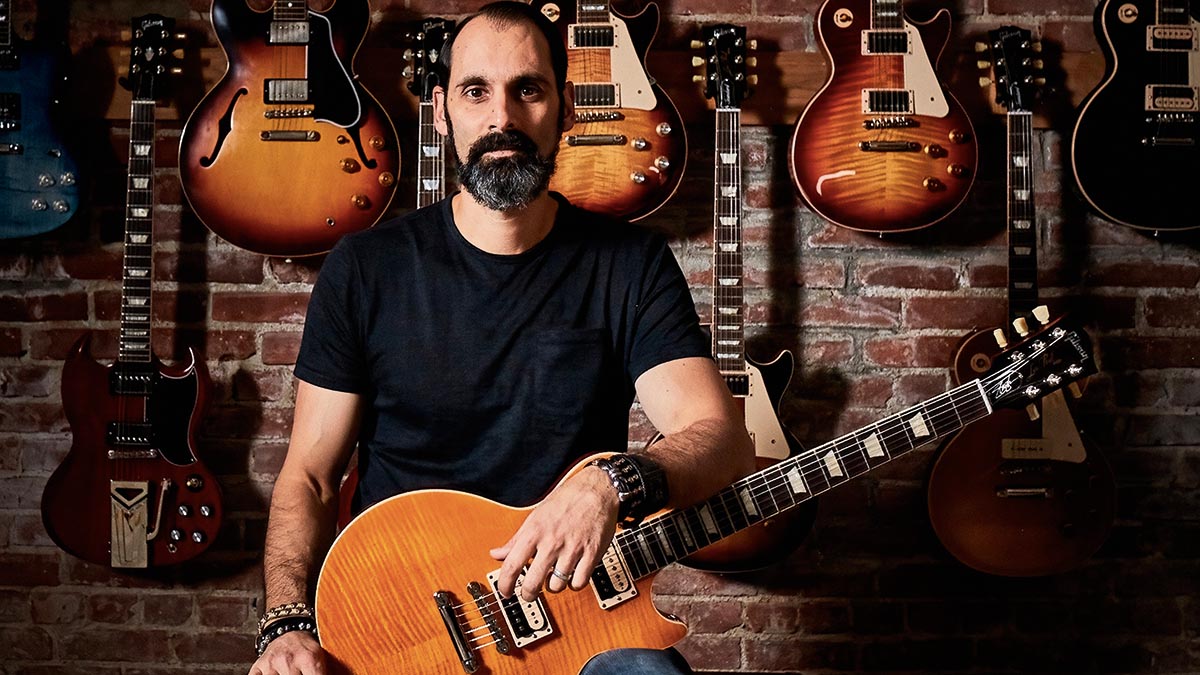
Since the takeover, Gibson has focused intensively on – as CEO Cesar Gueikian puts it – “leveraging our iconic past” and some feel that’s been at the expense of innovation. On the Tone Mob podcast last year, you made the point that innovation takes different forms – it doesn't have to be a new body shape, for example. So where do we see the innovation at Gibson at the moment?
“Well, not that it's a new concept, aged guitars, but I think the Murphy Lab has completely innovated on the level that we can expect from aging on new guitars –and I say that having played tens of thousands of vintage guitars in my previous job. I look at other companies, aging work, and I go, 'Meh'.
To be fair, anytime we've done anything radically new, it usually does not go over very well and becomes a joke in the industry!
“The Murphy Lab guitars tell authentic stories, because we're doing it from these original examples. Everything that we buy for the Vault or that comes through Certified Vintage gets photographed. We look at wear patterns.
“Tom [Murphy, Gibson’s Master Artisan] is always cataloging and analyzing those things so we can make them better and closer. So I think the Murphy Lab was a huge innovation for the aging of guitars – obviously, not a brand new concept, but I think that was hugely innovative.
“I think, how we connect with our fans of the brand [too]... There’s the Gibson Garage, Gibson TV, Gibson Publishing. We launched Gibson records. All of those are innovative in the musical instrument space.
“And I don't think a new shape is that innovative. If you take a new shape, and you put all the same 1950s innovations on it, you didn't innovate anything, you just made a new shape. That's not true innovation to me.
“And to be fair, anytime we've done anything radically new, it usually does not go over very well and becomes a joke in the industry! So there's a balance of what people expect and what people really want. And I think, right now, we're hitting a pretty good balance of both of those.”
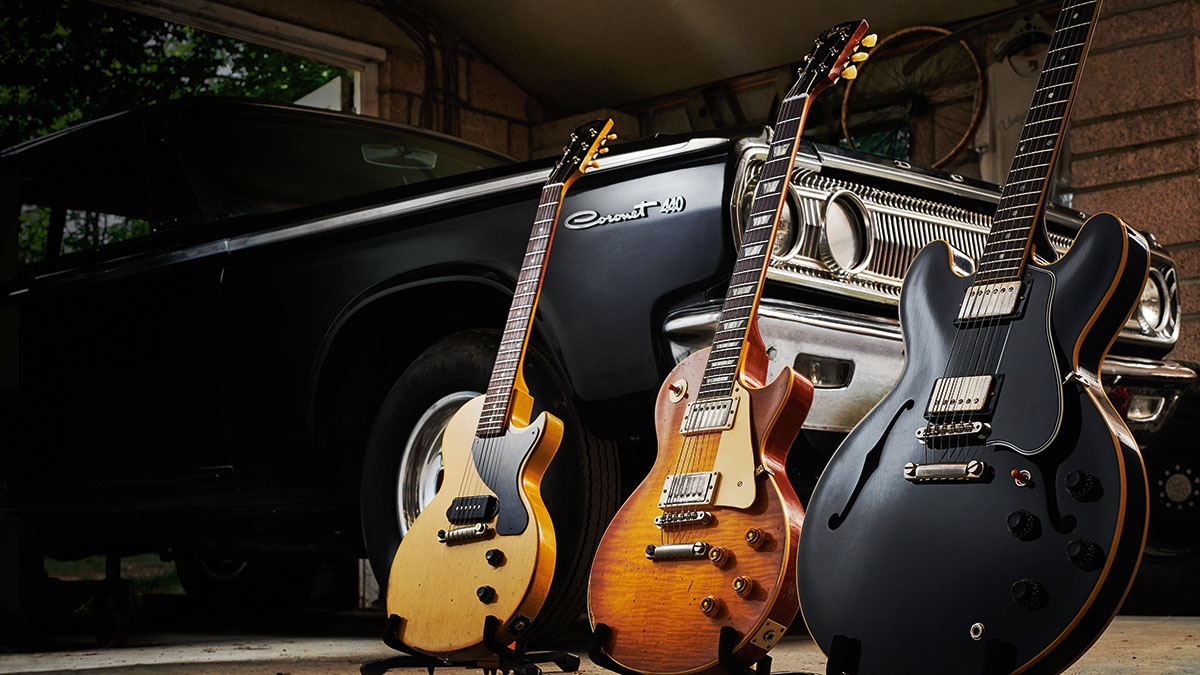
Conversely, you could make an argument that it was looking to the future all the time that bankrupted Gibson in 2018. That it was not appreciating what it had in terms of its history.
“It was not doing what the core of our fans want, which is great Les Pauls and SGs and 335s made the way that they were made. They can't afford those $500,000 guitars, so they want the closest thing to those that they can get, and that is the core of our business.
What innovations are everyone else doing that are going to leave us in the dust? All I see are Gibson innovations when I look at other people's guitars
“Now, that doesn't mean we can't continue to innovate or do other things. And I think the creation of the Original Collection and the Modern Collection really set that up. It's like, 'Here is this Original Collection of those guitars and it's not going to change. And if you want a Les Paul Standard, you're always going to be able to go get a ’50s-spec or a ’60s-spec Les Paul Standard.’
“On the Modern Collection, all bets are off; we can play with all sorts of things in that without offending the people that just want a Les Paul Standard. And I think when we set up the Original and Modern Collection that was one of the best things that happened.
“We can satisfy both without putting anybody off, [as opposed to] where every year a Les Paul Standard was a different thing, and had a whole different spec sheet. That was starting to really fatigue the people that just wanted a standard Gibson.”
Is the danger of getting left behind ever discussed at a senior level within Gibson?
“I don't think there's any fear of being left behind. Left behind? For what? What innovations are everyone else doing that are going to leave us in the dust? All I see are Gibson innovations when I look at other people's guitars.
“It's like, 'Oh, your guitar has a truss rod in it?' Yep. That's a Gibson innovation. 'Oh, humbucking pickup?' Yeah, that's Gibson innovation. A Tune-O-Matic bridge? That's a Gibson innovation. A maple top and mahogany body? That's a Gibson innovation.
“All of these things I see, they're all Gibson innovations that have just been broadly accepted in the industry and I just think people lose sight of that. We haven't had to [innovate], because everyone is still adopting these things that Gibson did from the ’20s, all the way into the ’60s, you know?”
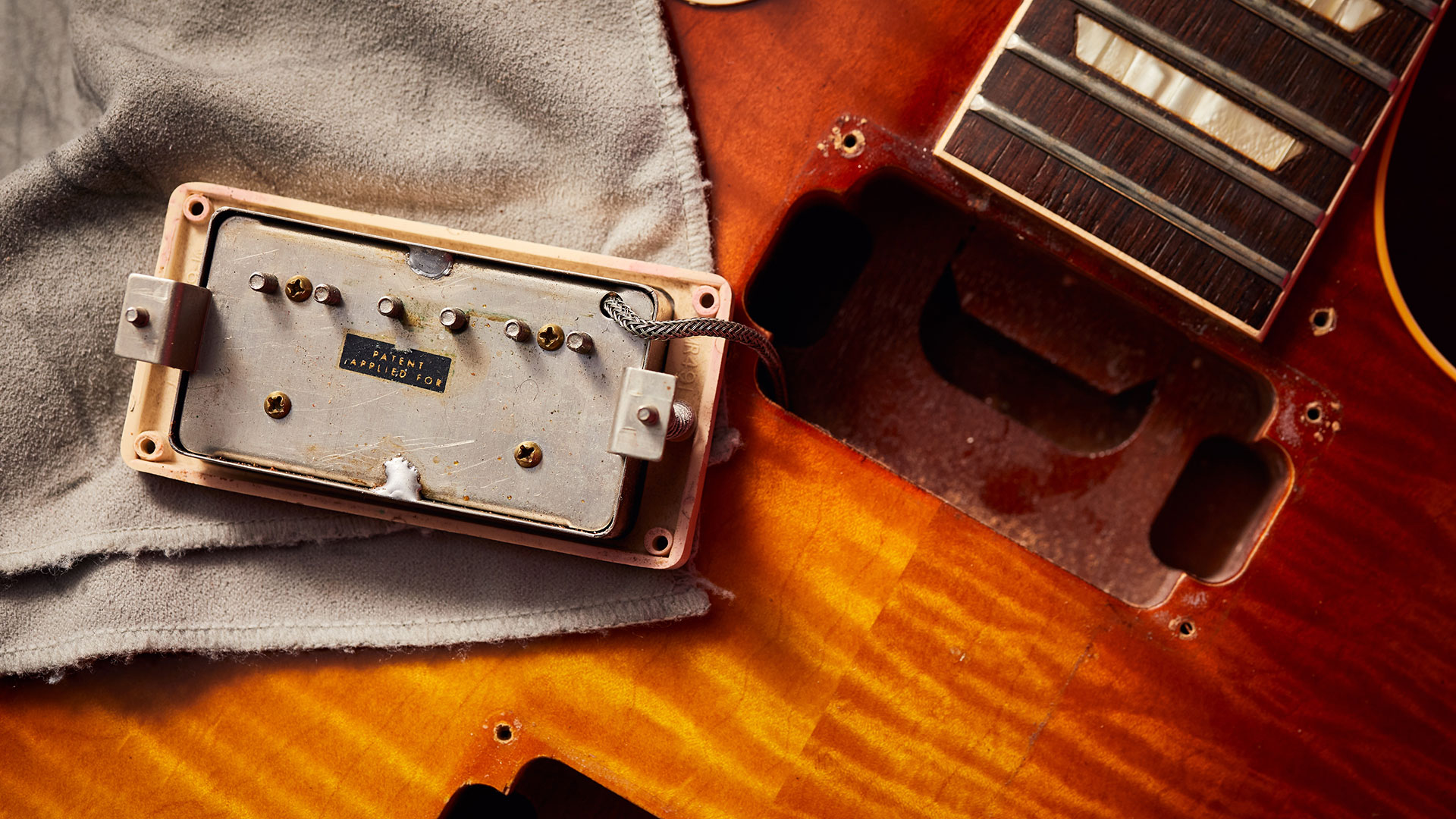
The counter-argument is that those innovations happened within that set period. And it’s not a Gibson-specific situation, of course, but 99 percent of the industry has not moved on substantially since those designs.
“I mean, we're still using quarter-inch Neutrik Jacks from the 1920s, and lusting after vacuum tube amplifiers, you know? Obviously, there's a whole new segment of players that are going towards digital on their amp choices and modeling and IRs and all that kind of stuff. And I totally understand and get that, but what are they modeling?”
Yep, mostly the same vintage amps.
When Slash was acquiring those vintage Les Paul copies, we didn't have a Custom Shop that was building proper ’59 reissue Les Pauls yet
“Really the only innovation there is finding a way to make it digital, but that's not necessarily an innovative sound. It's an innovation in the delivery of the same sound that was created 50 years ago, but just having them all in one box. So, hey, innovation is an interesting topic to talk about, especially in the guitarist sense. We are creatures of habit.”
On ‘Gibson innovations’, how do you square the focus on defending your IP against a high-profile endorsee like Slash, who used Gibson copies during his most iconic era? For instance, the Kris Derrig Les Paul used in the recording of Appetite For Destruction, or The Hunter ’Burst he played at early Guns N’ Roses shows.
“Well, you have to remember that when Slash was acquiring those guitars, we didn't have a Custom Shop that was building proper ’59 reissue Les Pauls yet [the Gibson Custom Shop launched in 1993]. And those guys were doing that and he fell in love with those guitars because they were like those originals. So yeah, I totally get that and why he used them.
“To me that's different than somebody trying to mass produce copies of somebody's IP. Those were, you know, one or two-off luthier-built things and we have those deals in place now, through our Authorized Partners.
“[Now] you can get a Joe Riggio or you can get a Banker [build] that is authorized by Gibson. And these great luthiers that can build this stuff have the license to do so because of that partnership. We have that mechanism in place now for them to use, through licenses, our IP. I think Banker makes incredible Flying Vs and Explorers and he's allowed to do so because of that program.
“Back then, it was a little more wild west and those things snuck through. But I think the reason Slash gravitated toward those guitars is because we had yet to fill that void in the marketplace for vintage reissues at that point.”
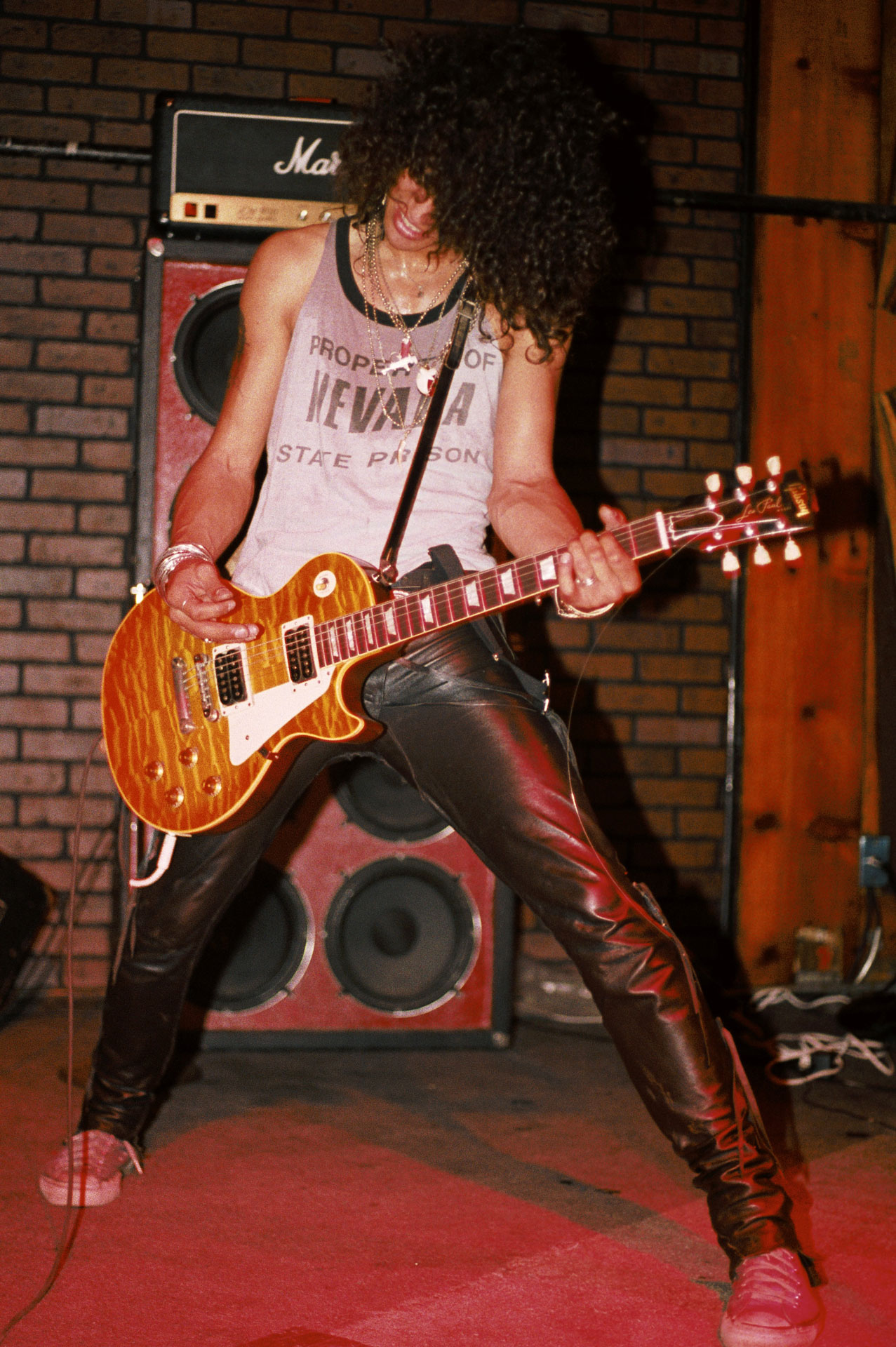
Looking forward then, what are you most excited about coming from the brand in the next few months?
“There are some new artist things that I'm very, very excited about, for a variety of reasons – not just the guitars, but obviously since I do a lot of the content portion of this, there's going to be some incredible content with those artists as well. That's what's got me most excited. I can't reveal names yet, but just think of the biggest people you could possibly imagine.”
Finally, what's been your best day in the job so far?
“Oh, man. Probably the opening of the Gibson Garage. That was something that I was very close to, and to see the whole thing come to life, and be open – and it's a couple years in now and it's become this Mecca in Nashville, for guitar players – was probably the best day so far. And you know, we just started construction on the Gibson Garage in London. So, again, bringing that one to life is going to be equally as gratifying.”
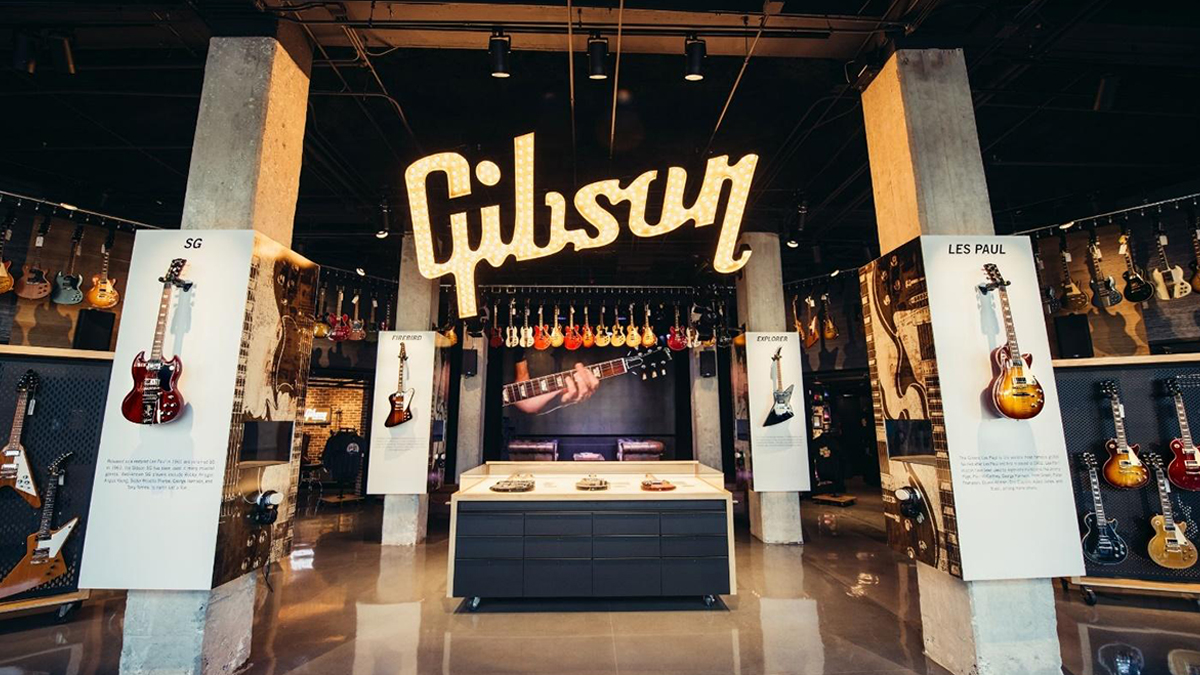
Is it true that you will sometimes let kids try ’Bursts and other vintage instruments at the Nashville Garage?
“Well, the advantage we have in Nashville is, my office is two floors above the garage. So anytime I get bored, I can just go downstairs and walk around and get to see people and meet them.
Anytime I can put a ’Burst in a kid's hands and give them that opportunity, we got them for life
“Anytime I see a nine-year-old kid who is into this stuff, like I was into this stuff when I was nine years old, I always grab them by the shoulder and bring them in the back, sit them down and be like: ‘Here's what you've been reading about. Play it. You now know more about this than 90 percent of the people who are commenting about it.’
“Anytime I can give them that opportunity, we got them for life; that kid's gonna be a guitar player for life, and is going to hopefully do something great with the guitar.
“That's ultimately all we're trying to do: create more guitar players and push the culture along. The guitar culture to me is far more important than what guitar people are playing. I just want more guitar players. And I want guitar front and center again in popular culture. So any way we can move that forward, that's what I'm here for.
“I can't build a guitar, I can't wire an amp. I'm completely useless. Woodworking? That is not my role here. My role is to push guitar culture forward. At least, that's what I think my role is, and what I'm trying to make my role be!”
- For more on the latest Certified Vintage drop, head to Gibson.
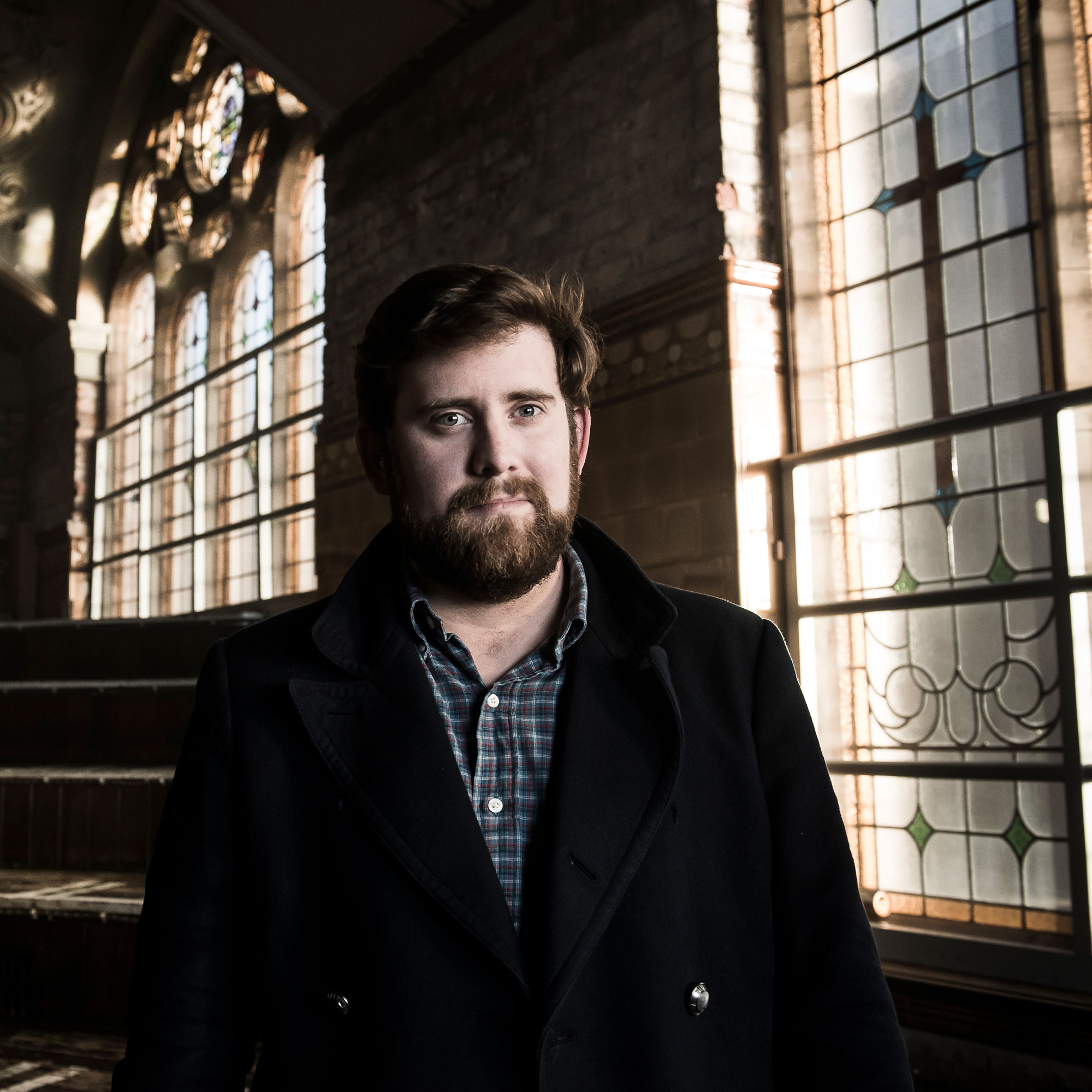
Matt is Deputy Editor for GuitarWorld.com. Before that he spent 10 years as a freelance music journalist, interviewing artists for the likes of Total Guitar, Guitarist, Guitar World, MusicRadar, NME.com, DJ Mag and Electronic Sound. In 2020, he launched CreativeMoney.co.uk, which aims to share the ideas that make creative lifestyles more sustainable. He plays guitar, but should not be allowed near your delay pedals.
